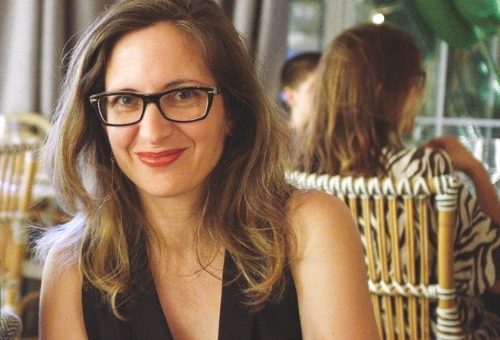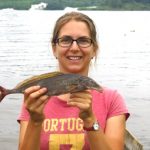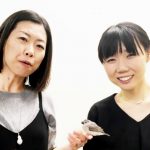

Why is it that we treat various species of animals so differently? In episode 71, Veronica Sevillano with the Autonomous University of Madrid discusses her research applying social psychology and conservation biology to understand the relationships people have with animals. Her chapter, “Animals as social groups: An intergroup relations analysis of human-animal conflicts” [PDF] was co-authored with Susan Fiske and published in the book Why people love and exploit animals: Bridging insights from academia and advocacy (edited by Kristof Dhont and Gordon Hodson) in November 2019.
Websites and other resources
-
- Verónica’s faculty profile and ResearchGate page
- Google Books preview of Verónica’s published chapter
- Article on Stereotype Content Model: “A model of (often mixed) stereotype content: competence and warmth respectively follow from perceived status and competition“
- Article on BIAS Map: “The BIAS Map: Behaviors From Intergroup Affect and Stereotypes“
- Images from Verónica’s chapter:
This slideshow requires JavaScript.
Bonus Clips
🔊 Access bonus content here.
 Support us for as little as $1 per month at Patreon. Cancel anytime.
Support us for as little as $1 per month at Patreon. Cancel anytime.
We’re not a registered tax-exempt organization, so unfortunately gifts aren’t tax deductible.
Hosts / Producers
Ryan Watkins & Doug Leigh
How to Cite
Music
What’s The Angle? by Shane Ivers
Transcript
Verónica Sevillano: Our stereotypes about animal species have an impact on how we feel and how we behave toward distinct animal species.
Ryan Watkins: This is Parsing Science: the unpublished stories behind the world’s most compelling science, as told by the researcher themselves. I’m Ryan Watkins.
Doug Leigh: And I’m Doug Leigh. Today, in episode 71 of Parsing Science, we’re joined by Verónica Sevillano with the Department of Social Psychology and Methodology at the Autonomous University of Madrid. She’ll discuss her research with Susan Fiske from Princeton University into applying social psychology to understand why we treat some animals as pets, but others as dinner. Here’s Verónica Sevillano.
Sevillano: Hi. I am Verónica Sevillano and [am] a social and environmental psychologist at the Psychology College in Universidad Autónoma de Madrid. I was raised in the suburbs of Madrid, Spain. And, during my childhood, I was very close to environment in general, and to rural areas in Toledo in particular. I was a scout. I studied psychology, and I earned my PhD in Complutense University in Madrid on environmental concern, and basic social psychological processes. After my PhD, it was clear to me that I have to pursue it a postdoc abroad. And my specialization at the time was environmental psychology, but I wanted to be focused on basic social psychology. So I contacted Professor Susan Fiske at Princeton, and we applied for a postdoc Fulbright scholarship.
Merging social psychology and conservation biology
Watkins: As a social psychologist, Verónica studies why people behave in the ways we do when other people are involved. So Doug and I were curious in learning how she became interested in applying social psychology to conservation biology, a multidisciplinary field which focuses on the loss of biodiversity that happens due to human-animal conflicts.
Sevillano: The connection between conservation biology and social psychology was based in the idea that [the] stereotype construct that is very popular in social psychology may be very useful for conservation biology also. Conservation biology studies beliefs about animal species, but they are referred to as “attitudes,” not the stereotypes. And we were really surprised about the fact that conservation biology doesn’t pay attention to stereotypes. Because we think that is very very useful for understanding how people think about animals. So our idea was that in the same way that we hold stereotypes about social groups, immigrants, or women, or whatever – we also do for animals. And our stereotypes about animal species have an impact on how we feel and how we behave toward distinct animal species. So I think it have a place, a role in how we research on this topic.
[ Back to topics ]
Referring to animals generically
Leigh: Anytime we first talk with a guest, Ryan and I start out by asking if they’ve had the chance to listen to a previous episode, as we think it gives a pretty good sense of what to expect about the show’s format. When we asked Verónica, she told us that she’d listened to our discussion with Susan Gelman, whose research is into the use of generic language in scientific communication. We spoke with her back in episode 63. Verónica’s manuscript also addresses the problems that can follow from using generic language – in her case, from referring to animals generically – instead of referring to specific animal species. So we were interested in hearing her thoughts about how her and Susan’s work might share some unanticipated commonalities.
Sevillano: Yeah, I think it’s pretty related. I thought that when I was listening to Professor Gelman. Yeah, for sure. Yeah, there is a problem. Because in European social surveys – and surveys in general – they are asking about animals in general. You have to make statements, or you have to answer questions, about “the animals” in generic terms. “What do you think about animals,” in the law system or whatever. But we know that there are huge differences between animal species. It’s not the same to a dog or to the be snake; it’s completely different. So we are assuming that maybe people are very, very worried about animal concern or animal rights when they are thinking of companion animals; pets for example. But more conservative people, they may think about rats or mice when they are thinking about animals. So [their] answers are completely different in meaning. So if you think about animals, for sure you are going to to see that people tend to think about animals at the collective or species level, right? This is like … the notion of species is very close to a group notion. Right? So if we if we think what is a social group in social psychology, we define groups as units or coherent entities that has, in biological terms, an essence. That is the case for animal species. So they have a biological essence, and we perceive it as unitary. So it’s easier to think … for a biologist, it is easier to think on animals species as social group more than for a social psychologist. Because it’s less challenging.
[ Back to topics ]
Realistic and symbolic conflict
Watkins: Verónica and Susan’s manuscript points out that the conflicts which groups of people experience can be categorized in one of two ways: either as realistic conflict, or as the result of a conflict that’s symbolic. Realistic conflicts can threaten the resources that are available to the groups we belong to, and stand to endanger our very well-being. But symbolic conflicts threaten not our lives, but rather the worldviews, values, and beliefs of the groups to which we belong. While symbolic conflict with other people doesn’t necessarily pose a threat to lives and limbs, when humans and animals have symbolic conflicts – be it through commercial livestock and wildlife hunting – it often does. So Doug and I were curious to hear Verónica’s thoughts about this distinction.
Sevillano: Well the idea about analyzing human-animal conflict from intergroup approach was that, when we were reading a lot of articles about these conflicts in conservation biology, we found that we were reading basically the same ideas that in social psychology were present in the intergroup relations approach. So, for example, conservation biology conceptualizes human-animal conflicts as conflicts for competition for resources. And [they are] subtly the same [thing] that social psychology does for human-human conflicts, right? So, you perceive a threat from another group because your resources or your well-being are in danger in the same way that you perceive that your resources or your well-being is [threatened] by an animal. It’s exactly the same; that is realistic conflict for social psychology. And the name for conservation biology was resources conflict: a conflict over the resources. And the other point was that something that we called in social psychology “symbolic conflict” that deals with how worldviews of individuals are threatened by other groups is an idea that is behind some psychological factors studied in conservation biology. Like identity or values, for example. So there is a clear parallel between both disciplines. So we have to to to work together to make sense to all of that. Because we know things about the differential importance of realistic or symbolic threats. For example, in social psychology symbolic threats are more important.
[ Back to topics ]
Animals as social groups
Leigh: Verónica and Susan’s chapter contends that distinct species of animals function as social groups. Such a point of view requires attributing some of the distinctive qualities of human social groups to animal species. Now, you might think that only naturalists or animal-rights advocates hold such perspectives, but the tone of her and Susan’s chapter doesn’t take such sides. We mentioned this to Verónica, and asked her thoughts on what differentiates conservationists from speciesists.
Sevillano: I’m happy that you said that, because we really wanted that. We are not very pro-animal people. We are studying social perception of animals. Okay, but we are … we don’t want to make strong claims, because we don’t want to say that every possible negative behavior that an animal has to suffer or has to deal with is discrimination. That is a very broad question, maybe a political one or more related with sociological and policy questions. So we wanted to be very neutral. And so – this is coming from from conservation biology, mostly – but some people [have] a value orientation that is cooperative with wildlife. And other has a more utilitarian way to see wildlife. So they are … for example, the utilitarian or doministic orientation is more prone to hunt and to see problematic wildlife if they are burden for social style or the identity of the group, for example. Mutualism or more cooperative people, they don’t want to kill or to hunt animals, and they prefer to observe animals and to pay for conservation practices, for example. Yeah, so values are really important for how we deal with wildlife.
[ Back to topics ]
The Stereotype Content Model
Watkins: Verónica and Susan used a questionnaire to identify and categorize people’s attitudes toward various animal species. The survey was originally developed to validate a conceptual model of Susan’s about how our perceptions of the warmth and competence of different groups of people can elicit either pity or admiration of them, or envy and contempt. So we asked Verónica to tell us more about the model, as well as how it can also be applied to our perceptions of animal species.
Sevillano: Well, we based our research on Stereotype Content Model [that] is a model which identified two basic dimensions for how we think about groups of persons. Those two dimensions are warmth and competence. And warmth is related with the perceived intentionality of a group or a person: good or bad intention. And competence refers to abilities and capacities that the person or the group have to achieve their goals. So these two dimensions are the content of these stereotypes that we hold about groups or [a] person, and we applied this model to animals. So stereotypes – or content of the stereotype – is related with the emotion that we feel about the animals, or groups, or person, depending on the warmth and competence dimensions. And the emotions are related with the behavioral tendencies that we show about distinct animal species based on a stereotype content. So it’s like a chain between stereotypes, emotions, or prejudice and behavioral tendencies, or discrimination. So, for example, wolves in our model are intelligent animals, but also are very aggressive animals. So they are competent, but also they are cold. So those animals – predators, in this case – are associated with active harm, like killing or hunting, but also with passive facilitation, that is: conservation and management. So those are animals are exposed to both behavioral tendencies of human beings.
[ Back to topics ]
Subordination, threat-awe, contemptible, and protective stereotypes
Leigh: While writing my dissertation, one of the most useful books I happened across was called “The power of the two-by-two matrix,” which essentially breaks down much of our lives into discrete two-variable questions. And one of the things I very much gravitated toward in Verónica and Susan’s chapter was that it does the same, but with regard to the question of our social perceptions of animals. So we asked Verónica to explain how her and Susan’s two-by-two matrix works to do so.
Sevillano: So, in 2016, we were researching about different types of stereotypes. And we use the Stereotype Content Model, and we adapted the Stereotype Content Model 25 animal species. So the idea was to test if the different spaces for the Stereotype Content Model were found. And we found four types of stereotypes that were very apparent. One of them was subordination stereotype, for mostly prey animals. Such as cows, or rabbits, or hamsters, for example. And the other stereotype was threat-awe stereotype, mostly for predators. So in this group of animals were tigers, bears, lions, or leopards. So, those animals are our different animals, but are very similar for most people. So they’re similarity perceived. And the third type of stereotype was the contemptible stereotype, mostly for rats or snakes; mice, chickens or [lizards]. And in the last one was the protective stereotype, and that was for pets.
[ Back to topics ]
The BIAS Map
Watkins: Verónica and Susan also applied another two-by-two framework over the four cells of the Stereotype Content Model, essentially creating a two-by-two-by-two conceptual model. We were curious to hear how this second framework – called the BIAS Map – helped them gain a better understanding of how the stereotypes that we hold about those outside of our groups can help explain the actions we take towards, or against, them. We’ll hear what she had to say after this short break.
ad: Altmetric.com
Watkins: Here again is Verónica Sevillano.
Sevillano: I didn’t mention before, but we based our approach in Stereotype Content Model, but also in the BIAS Map. But, of course, we had to adapt the various model to the animals. Because, for example, the same emotions that we feel about humans are not suitable for some animal species. For example, I am thinking about the emotion of envy. We don’t feel envy for animal species. Well, yeah, maybe someone very, very close to nature in a very high connectivity with nature – something like that – maybe may feel some envy. But most people don’t feel envy toward animals. So we couldn’t find envy or, for example, we didn’t find also compassion toward animals. That was very clear in the model. But we, for example, found indifference, fondness, disgust, and threat-and-awe. Indifference for high-warmth low-competence animals, and those are cows, or rabbits, and all of that. And fondness for pets, and also horses and elephants. But the threat-and-awe emotions are related with predators. And and disgust is only for low-competence low-warmth animals. So we changed, a little bit, the BIAS Map … with research of course. And we found these four emotions that are a little more basic than envy or compassion. So that is for the part of the emotion or prejudice. And the other part is the behavioral tendencies related with different animal species and the BIAS Map by [Amy] Cuddy made a very clear statement about what are the dimensions important for how we deal with social groups. And Cuddy proposed two dimensional behavioral tendencies. One is positive or negative behaviors, that is valence – positive negative – or facilitation, and the other is intensity. So, a behavior may be more or less intense, or more or less direct. And we found the same … adapted, of course.
[ Back to topics ]
Three experiments into our social perceptions of animals
Leigh: Having established the general aims of their research, Ryan and I asked Verónica to explain the objectives of three studies which they carried out to answer the broader question of why we love some animals and exploit others.
Sevillano: So, the first study tested the adapted Stereotype Content Model for animals. So, we found on the Stereotype Content Model space for 25 animal species. Some were high – others were low – in warmth. Some others where high or low in competence. Sp we found four groups of animal species. And then in the second study, we apply the BIAS Map to these animal species. And then in the third study, we relate social groups with animal species. So we wanted to see if social groups that were perceived in a specific way in the Stereotype Content Model are related to animals that are perceived in the same way in the Stereotype Content Model. It’s similar to the video game “Animal Crossing,” that you get an idea about there role of an animal because of the job that he’s doing. So, there is a correspondence between how we perceive social group and how we perceive animals.
[ Back to topics ]
Data collection and analysis
Watkins: Doug and I followed up by asking Verónica to tell us more about the modified questionnaire that she and Susan used to explore how the content of our stereotypes about animal species parallels the stereotypes that we hold about other groups of people.
Sevillano: So, you ask participants to rate a list of animals. More or less 10 or 15 animals. And we asked about friendliness towards them: “To what extent do you think that the following animals are friendly, are intelligent, are skillful, are trustworthy, are well-intentioned, are competent?,” also. And they have to rate each animal in a Likert scale. So after that, we analyzed the responses using cluster analysis that allows to group in a graph the different animal species that are perceived similarly – after some statistical criteria, of course, and all of that. [Then] we draw the position of the different species in a graph.
[ Back to topics ]
Verónica’s upcoming research
Leigh: We wrapped up our conversation with Verónica by asking what she has planned next with regard to bringing social psychology and conservation biology into closer alignment, and perhaps creating greater cooperation between social psychologists and conservation biologists themselves.
Sevillano: I am trying to make connections with biologists, because I think we need some biologists in the group for expanding the research. And I really wanted to follow [up] with [a] more applied area. Because, for example, in USA – in North America – it’s very common to research people in the rural areas through focus group or through participatory activities … for including rural people in decisions that [politicians] have to make about animals conservation or environmental conservation. But here in Spain it’s not a developed field. And through all our research I think we could develop protocol for working with communities, trying to manage conflict in a very participatory way. So that is for an applied site. And the other thing we are working on is the variables that predict how warmth and competence is perceived in animals. Because the Stereotype Content Model proposed two structural variables: there is status and cooperation. So, those groups that are very cooperative in our society are perceived as warmer, and those groups high in status in the society are perceived as high in competence. And right now we are collecting data about cooperation and competition and statues of different animal species. And we have to look if they are related with competence or warmth.
[ Back to topics ]
Links to manuscript, bonus audio and other materials
Leigh: That was Verónica Sevillano, discussing her manuscript with Susan Fiske, “Animals as social groups: An intergroup relations analysis of human-animal conflicts,” published in the book Why we love and exploit animals in November 2019 by Routledge. You’ll find a link to their chapter at parsingscience.org/e71, along with transcripts, bonus audio clips, and other materials we discussed during the episode.
Watkins: As many of us continue sheltering-in-place during the coronavirus, maybe giving a listen to some of our previous episodes might bring a little respite during these trying times. You can check out any of our past 70 episodes at parsingscience.org/episodes. Also, Doug and I highlight our newly-booked guests in a weekly email digest at parsingscience.org/digest. And we welcome you to join in the conversations by submitting any questions you’d like us to ask them at parsingscience.org/upcoming.
[ Back to topics ]
Preview of next episode
Leigh: Next time, in episode 72 of Parsing Science, we’ll talk with Akchou Rasphone from the Wildlife Conservation Research Unit at Oxford. She’ll talk with us about her research which found that improvised snares in Laos have completely decimated the wild tiger pollution, a species whose worldwide population is now estimated to be around 200.
Akchousanh Rasphone: Poachers will put their hands on every single piece or every single animal they can get from the area. Because the bush meat demand is very high, especially in China. It would still be a challenge for any species population in this protected area as well as any other habitats in Laos.
Leigh: We hope that you’ll join us again.
[ Back to topics ]








Next time, in episode 72 of Parsing Science, we’ll talk with Akchousanh Rasphone from the Wildlife Conservation Research Unit at Oxford. She’ll talk with us about her research which found that improvised snares in Laos have completely decimated the wild tiger pollution, a species whose worldwide population is now estimated to be around 200.@rwatkins says:
We wrapped up our conversation with Verónica by asking what she has planned next with regard to bringing social psychology and conservation biology into closer alignment and - perhaps - creating greater cooperation between social psychologists and conservation biologists themselves.@rwatkins says:
Doug and I followed up by asking Verónica to tell us more about the modified questionnaire that she and Susan used to explore how the content of our stereotypes about animal species parallels the stereotypes that we hold about other groups of people.@rwatkins says:
Having established the general aims of their research, Ryan and I asked Verónica to explain the objectives of three studies which they carried out to answer the broader question of why we love some animals and exploit others.@rwatkins says:
Verónica and Susan also applied another two-by-two framework over the four cells of the Stereotype Content Model, essentially creating a two-by-two-by-two conceptual model. We were curious to hear how this second framework - called the BIAS Map - helped them gain a better understanding of how the stereotypes that we hold about those outside of our groups can help explain the actions we take towards - or against - them. We'll hear what she had to say after this short break.@rwatkins says:
While writing my dissertation, one of the most useful books I happened across was called "The power of the two-by-two matrix," which essentially breaks down much of our lives into discrete two-variable questions. One of the things I very much gravitated toward in Verónica and Susan's chapter was that it does the same, but with regard to the question of our social perceptions of animals. So we asked Verónica to explain how her and Susan's two-by-two matrix works to do so.@rwatkins says:
Verónica and Susan used a questionnaire to identify and categorize people's attitudes toward various animal species. The survey was originally developed to validate a conceptual model of Susan's about how our perceptions of the warmth and competence of different groups of people can elicit either pity or admiration of them, or envy and contempt. So we asked Verónica to tell us more about the model, as well as how it can also be applied to our perceptions of animal species.@rwatkins says:
Verónica and Susan's chapter contends that distinct species of animals function as social groups. Such a point of view requires attributing some of the distinctive qualities of human social groups to animal species. Now, you might think that only naturalists or animal-rights advocates hold such perspectives, but the tone of her and Susan's chapter doesn't take such sides. We mentioned this to Verónica, and asked her thoughts on what differentiates conservationists from speciesists.@rwatkins says:
Verónica and Susan's manuscript points out that the conflicts which groups of people experience can be categorized in one of two ways: either as realistic conflict, or as the result of a conflict that’s symbolic. Realistic conflicts can threaten the resources that are available to the groups we belong to, and stand to endanger our very well-being. But symbolic conflicts threaten not our lives, but rather the worldviews, values, and beliefs of the groups to which we belong. While symbolic conflict with other people doesn't necessarily pose a threat to lives and limbs, when humans and animals have symbolic conflicts - be it through commercial livestock and wild animal hunting - it often does. So Doug and I were curious to hear Verónica's thoughts about this distinction.@rwatkins says:
Anytime we first talk with a guest, Ryan and I start out by asking if they've had the chance to listen to a previous episode - as we think it gives a pretty good sense of what to expect about the show’s format. When we asked Veronica, she told us that she’d listened to our discussion with Susan Gelman ... whose research is into the use of generic language in scientific communication, we spoke with her back in episode 63. Veronica's manuscript also addresses the problems that can follow from using generic language - in her case, from referring to animals generically - instead of referring to specific animal species. So we were interested in hearing her thoughts about how her and Susan's work might share some unanticipated commonalities.@rwatkins says:
As a social psychologist, Verónica studies why people behave in the ways we do when other people are involved. So Doug and I were curious in learning how she became interested in applying social psychology to conservation biology, a multidisciplinary field which focuses on the loss of biodiversity that happens due to human-animal conflicts.